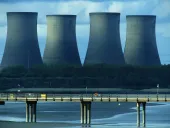Does shale gas have a future in China? - Part 2
By John YeapIn March 2012, the NDRC, Ministry of Finance, MLR and NEA jointly issued a development plan designated for China's shale gas development. The Plan applies to shale gas development activities and initiatives in China from 2011 to 2015.
It sets down milestones to be achieved by China during this period, including the Government setting up designated funds to support shale gas surveys and appraisals.
It also provides for increased support from the Government, which plans to classify shale gas technology research as a 'significant national project' with a primary goal to establish research and development that will put Chinese shale gas technology at the forefront of the industry.
The Government also states in the Plan that it will accelerate the permitting process for "quality investors".
More recently, the NEA under the NDRC released the Shale Gas Industry Policy in October 2013. The Policy contains detailed rules and procedures relating to shale gas exploration and external cooperation. The main parts of the policy are summarised below.
Qualifications for shale gas companies Shale gas exploration companies need to be financially sound, have well established accounting systems and be subject to MLR's technical specifications relating to shale gas including in relation to the calculation of reserves, seismic prospecting, and drilling.
Energy efficiency and environmental protection Shale gas exploration companies must comply with environmental regulations, use water and energy efficiently, assess environmental impacts of proposed projects and comply with applicable environmental standards.
In addition, installations for the prevention and control of pollution must be designed, incorporated, and commissioned into a shale gas project.
Subsidies and incentives Central and local Governments will provide a range of financial support to shale gas production from subsidies to tax reductions or exemptions. For example, imported equipment will be exempt from customs tariffs in order to promote technological advancement.
Marketing The Government will continue to encourage public and private investment in the exploration, extraction and trading of shale gas. It has promised to create an open and fair market for investors.
Shale gas will be priced according to market demand and supply. Although introducing the Policy is an important development towards shale gas commercialisation in China, there is still no single set of detailed rules to regulate shale gas activity.
Issues relating to exploration and utilisation are regulated under laws applicable to mineral resources and environmental protection.
The principal law regulating shale gas extraction is the Mineral Resources Law, which requires the registration of all entities engaged in exploration or mining activities in China and establishes a system for the application and granting of exploration and mining rights. Once a permit is issued there are certain obligations that must be complied with.
For example, there are scheduled minimum exploration expenditures and reporting requirements with the local licensing authority.
The principal environmental law that is generally applicable to the shale gas industry is the Environmental Protection Law (EPL). Article 13 of the EPL requires enterprises (including shale gas enterprises) to assess the environmental impact of proposed projects and comply with applicable environmental standards.
Article 16 of the EPL requires that installations for the prevention and control of pollution at a construction project must be designed, built and commissioned together with the principal part of the project.
Further laws dealing with environmental pollution by solid waste, water pollution, noise pollution and atmospheric pollution, as well as the protection of wildlife, must also be adhered to.
Shale gas production in China – key challenges
There are a number of key challenges to overcome in order for shale gas to succeed in China.
Need for adequate infrastructure At the exploration stage, proper drilling wells need to be assembled. Later on, in the production phase, sufficient pipelines and access roads are necessary for efficient extraction.
This is where China falls considerably short. It does not have the required pipelines to transport gas to where it is needed. Experts say that the construction of adequate pipelines will be a long term process.
Costs of extraction Shale gas in China tends to be located in mountainous, rock, and desert areas. As a result, the transportation and installation of essential equipment can be an arduous and costly process. The average cost of drilling in China is reported to be up to 10x the average costs in the United States.
As shale gas will have to compete with natural gas, either the price of natural gas will have to rise significantly or the cost of extracting shale gas will need to fall significantly before China's shale gas can become competitive.
Environmental challenges Environmental concerns also bring about considerable risk to those entering the shale gas market, and those who do must be prepared to mitigate these risks.
For instance, China lacks a steady supply of water due to drought conditions, and water is essential in the process of hydraulic fracturing.
The proposed alternative is the use of chemically diluted water but this will raise environmental risk, particularly with regards to ground water contamination. It is feared that since the treated water contains high amounts of toxic chemicals, in the event of poor environmental regulation these chemicals could seep into drinking water underground.
This presents reputational risk if ground water contamination results in bad publicity with the company having to bear the risks and the costs of decontamination.
In addition, experts report that shale gas in China contains high levels of non-hydrocarbon gasses, which run the risk of damaging drilling equipment and air pollution. Strict emissions standards may need to be enforced by the relevant authorities in order to control this risk.
Technological challenges The technology currently available to China was developed by the United States where the drilling depth for shale is substantially shallower than is predicted and has been found in China. In the United States, the average drilling depth is 800 – 2600 metres compared to China where the average drilling depth is 1500-4000 metres.
China is beginning to modify and develop technology on its own through knowledge transfer gained from overseas acquisitions and expert advice. However, at present, it appears this knowledge is still insufficient for China to extract shale gas of any significant scale without the assistance of foreign parties.
Regulation A transparent and predictable regulatory framework is also essential to developing large-scale shale gas production. This includes clear access to licenses and Government subsidies for private companies who take the risk to invest.
The Government has been urged to introduce preferential subsidy schemes to support shale gas development but has only so far offered limited tax benefits and easier access to credit.
The introduction of a Shale Gas Industrial Policy in October 2013 is a positive step towards the development of a domestic shale gas industry in China.
However, as discussed above, the lack of a comprehensive regulatory regime and the need to address other commercial and technical risks mean China is still some way from commercialising its shale gas potential.
But we believe it is just a matter of time before we see a clearer and more robust regulatory environment for shale gas given the twin factors of China's huge potential for shale gas and the need to find cleaner alternatives to burning coal to power its economic growth.




















 Advertise
Advertise







